Your beautiful garden and park designs disappear into darkness at night. This makes them feel unsafe and unusable after sunset. The right LED floodlights transform these spaces into magical, inviting areas.
LED floodlights enhance ambience by providing versatile, targeted illumination. They highlight key features like trees and statues, create depth with shadows, ensure safety on pathways, and offer various colors and temperatures to set the perfect mood for any outdoor space.
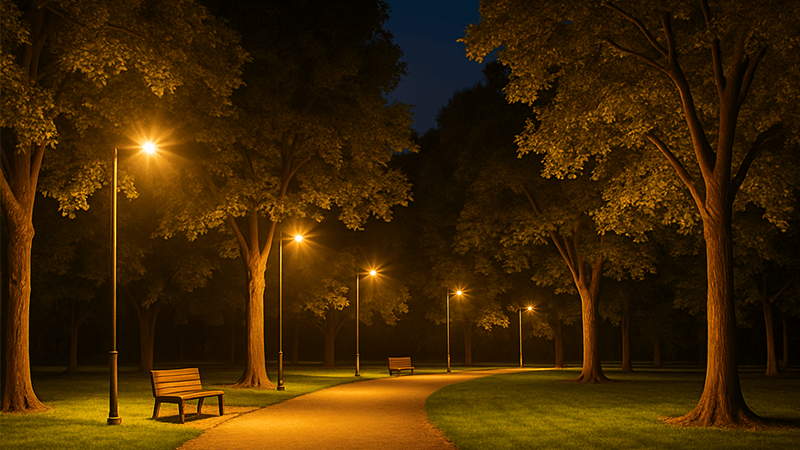
The impact of lighting goes far beyond just making things look pretty. In my years of manufacturing lighting, I’ve seen firsthand how the right solution serves crucial functions in public spaces. It’s about safety, usability, and creating a genuine connection between people and their environment. Understanding these functions is the key to unlocking the full potential of any outdoor design. Let’s explore why lighting is so fundamental to creating successful and beloved community parks and gardens.
Why is lighting important in parks?
Many parks become empty, intimidating no-go zones after dark. This limits community enjoyment and can make the area feel unsafe. Thoughtful lighting design makes parks safe, accessible, and enjoyable 24/7.
Lighting in parks is crucial for three main reasons: safety, accessibility, and aesthetics. It illuminates pathways to prevent accidents, deters crime to make visitors feel secure, and extends the park’s usability after sunset. Good lighting also highlights the park’s natural and architectural beauty, creating a welcoming atmosphere.
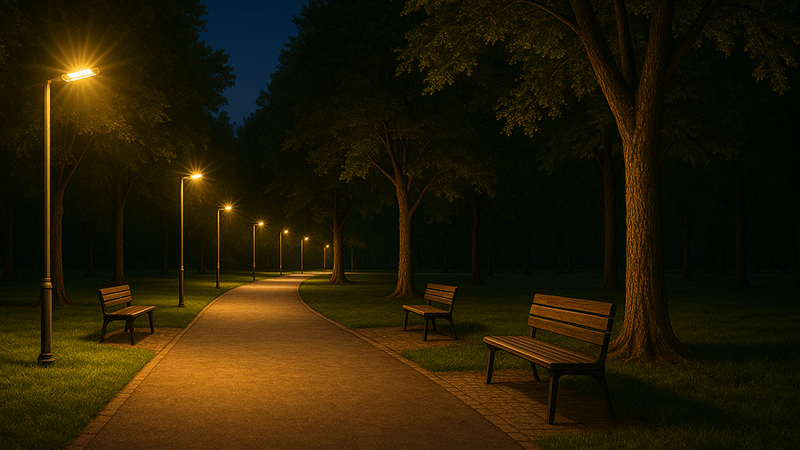
Let’s dive deeper into these three pillars. The most important function is safety and security. Proper illumination is a core principle of Crime Prevention Through Environmental Design (CPTED). Well-lit pathways and open areas reduce dark spots where criminal activity could occur. It makes visitors feel more comfortable and secure. I remember a project for a city park that had a bad reputation. After my team helped install a new LED floodlight system, the community feedback was instant. Families started using the park in the evenings, and local police reported a drop in incidents. It completely changed the public’s perception of the space.
Next is accessibility and usability. Lighting literally extends the hours a park can be used. This provides immense value to a community, especially for people who work during the day. Think about lit basketball courts, illuminated picnic areas, or just safely lit benches for a quiet evening. It transforms the park from a daytime-only asset into a round-the-clock community hub. The final element is aesthetics. This is where design and lighting truly merge. With LED floodlights, you can turn trees into dramatic sculptures, highlight the texture of a stone wall, or make a fountain glow. It’s about creating mood and guiding the eye.
| Feature |
Unlit Park |
Well-Lit Park with LED Floodlights |
| Pathways |
Tripping hazard, feels insecure |
Clear, inviting, guides visitors safely |
| Trees/Gardens |
Invisible, dark mass |
Dramatic focal points, adds depth and texture |
| Monuments |
Lost in the darkness |
Highlighted as centerpiece art |
| Seating Areas |
Unused, unwelcoming |
Safe, usable social spaces for the community |
What is the purpose of using LED lights in green building design?
Traditional lighting uses a massive amount of energy. It also creates a high environmental cost. This directly conflicts with the goals of sustainable, green building projects that aim for efficiency.
In green building design, LEDs serve the primary purpose of reducing energy consumption and environmental impact. Their high efficiency, long lifespan, and lack of hazardous materials like mercury make them a sustainable choice. This lowers operational costs and helps projects achieve green certifications.
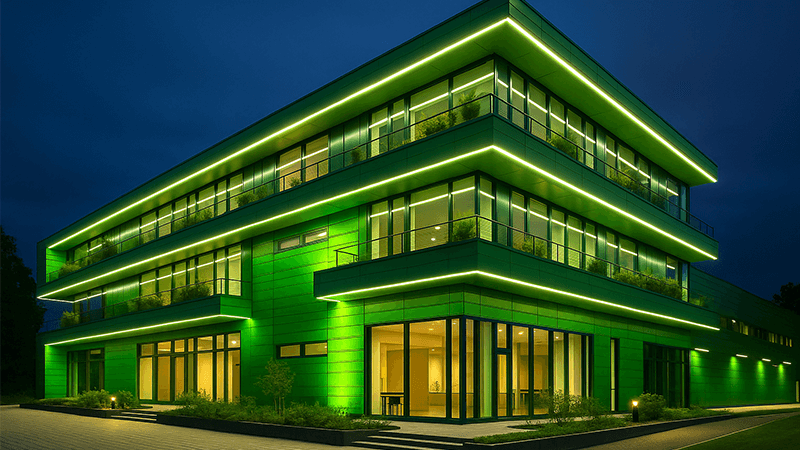
The goals of green building are rooted in efficiency and sustainability, and LED lighting is a perfect match. The first and most obvious benefit is energy reduction. LEDs use up to 80% less energy than old incandescent bulbs to produce the same amount of light. For a large building or park, the electricity savings are enormous. This directly lowers the building’s operational carbon footprint.
Then there is the issue of longevity and waste. A quality LED floodlight can last for 50,000 hours or more. Compare that to an old halogen bulb that might last only 2,000 hours. This long life means far fewer replacements, which saves on maintenance costs and labor. It also means significantly less waste ends up in landfills. I had a client in the UAE, Shaz, who was constantly replacing bulbs in a large commercial landscape. We switched them to our LED floodlights, and their maintenance calls dropped by over 90% in the first year alone. The savings were huge.
Material safety is another cornerstone of green design. Unlike fluorescent lamps, LEDs contain no mercury or other hazardous materials. This makes them safer to handle and dispose of. The durability of the components also matters. For instance, the encapsulation of the LED chip itself is critical. We use high-quality silicone resin that is incredibly durable. It withstands high temperatures without degrading and resists UV light, so it doesn’t yellow or crack. This durability is key to a long, maintenance-free life, which is a fundamental goal of green design.
| Green Building Aspect |
How LEDs Contribute |
| Energy Reduction |
High lumens per watt, significantly lower power consumption. |
| Waste Reduction |
Lifespan of 50,000+ hours reduces replacement frequency and landfill waste. |
| Material Safety |
No mercury or other hazardous materials commonly found in CFLs. |
| Light Pollution |
Directional nature minimizes light trespass and skyglow. |
| Smart Integration |
Easily pairs with sensors for daylight harvesting and occupancy detection. |
How does LED lighting improve the efficiency of plant growth compared to other forms of electrical illumination?
Traditional grow lights are inefficient. They generate too much heat and waste a lot of energy. This can scorch plants and drive up electricity bills for any indoor growing operation.
LEDs improve plant growth efficiency by delivering specific, optimized light wavelengths that plants need for photosynthesis. They produce very little heat, allowing them to be placed closer to plants without causing damage, and they consume far less energy than traditional HPS or MH lamps.
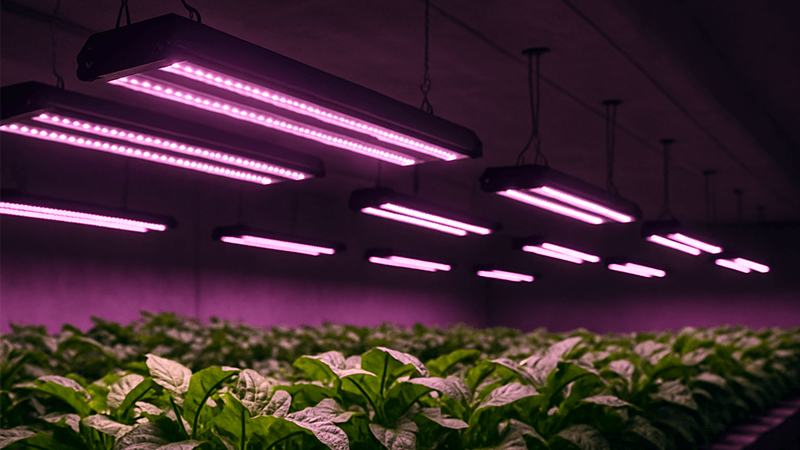
The superiority of LEDs in horticulture comes down to precision and efficiency. Older technologies like High-Pressure Sodium (HPS) or Metal Halide (MH) lamps produce a broad, fixed spectrum of light. A lot of that light, particularly in the green and yellow range, is not used effectively by plants for photosynthesis. It’s wasted energy. LEDs, however, can be engineered to emit very specific wavelengths. We can create "light recipes" that deliver the exact red and blue light that plants crave for growth, maximizing energy use.
Another huge factor is heat. HPS and MH lamps get incredibly hot. They can easily burn plant leaves if they are too close and require expensive ventilation and cooling systems to manage the temperature. All that heat is just wasted energy. LEDs produce very little heat. You can place them much closer to the plant canopy. This increases the light intensity that the plant receives without the risk of heat stress, leading to faster, healthier growth.
This efficiency also relies on the fixture’s long-term durability, especially in a high-humidity greenhouse. The materials must be robust. This is why the encapsulation of the LED chip is so important. In our horticultural lights, we use a low-viscosity silicone resin that is completely transparent, allowing all the light to pass through. More importantly, it can handle the high temperatures and constant humidity without degrading. It’s also UV-resistant, so the lens won’t yellow over time and block precious light from the plants. This material quality ensures the light maintains peak performance for its entire 50,000+ hour lifespan.
| Feature |
LED Grow Lights |
HPS/MH Grow Lights |
| Spectrum |
Tunable, optimized for growth stages |
Fixed, broad-spectrum (wasted energy) |
| Heat Output |
Very low |
Very high (can scorch plants) |
| Energy Use |
Low |
High |
| Lifespan |
50,000+ hours |
10,000 – 24,000 hours |
| Proximity to Plants |
Can be placed very close |
Must be kept at a distance |
What do LED lights do for plants?
Plants need light to live, but not just any light will do. Using the wrong light source can lead to weak, leggy, or unhealthy plants that fail to thrive.
LED lights act as an artificial sun, providing the specific wavelengths of light that fuel photosynthesis. By emitting targeted blue light, they encourage strong leaf and stem growth. By emitting red light, they promote flowering, budding, and fruiting, allowing for complete control over the plant’s life cycle.
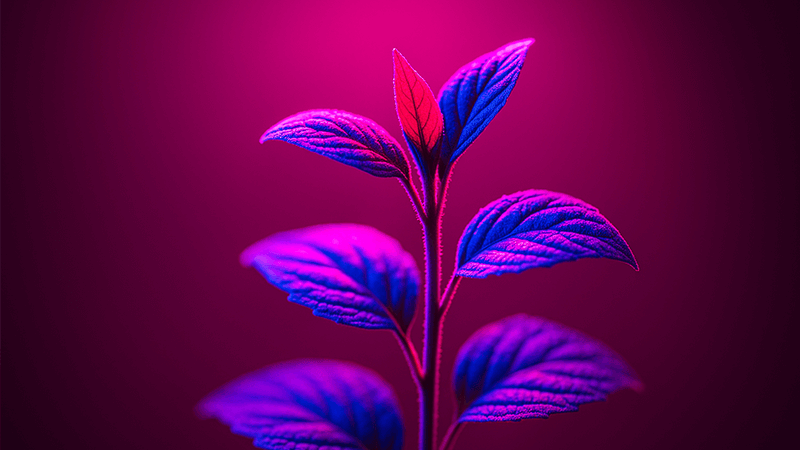
To understand what LEDs do for plants, we have to look at biology. The process of photosynthesis, which is how plants create their food, relies mainly on the absorption of light by chlorophyll. Chlorophyll is most efficient at absorbing light in the blue and red parts of the spectrum. It reflects most green light, which is why plants appear green to our eyes. LEDs are powerful because we can make them produce exactly these useful colors of light.
Different colors of light act as signals that control how a plant develops. This process is called photomorphogenesis. Blue light, which is in the 400-500 nanometer range, is crucial for the vegetative stage. It promotes strong root development, chlorophyll production, and tells the plant to grow dense, compact leaves and stems. Without enough blue light, plants can become "leggy" and stretched out.
Red light, in the 600-700 nanometer range, is the primary trigger for the reproductive stage. It signals to the plant that it’s time to start flowering, budding, and producing fruit. I worked with a vertical farm that was struggling with inconsistent lettuce yields using generic white lights. We designed a custom LED system with a specific ratio of red and blue light. Within one cycle, their lettuce was denser, greener, and ready for harvest a few days earlier. It showed them how powerful these light recipes can be. By controlling the mix of these colors, a grower has complete command over the plant’s entire life cycle.
| Light Color |
Wavelength Range |
Primary Effect on Plants |
| Blue Light |
400-500 nm |
Promotes strong vegetative growth (leaves, stems). |
| Red Light |
600-700 nm |
Triggers flowering, budding, and fruiting. |
| Green Light |
500-600 nm |
Penetrates deeper into the plant canopy to assist photosynthesis. |
| Far-Red Light |
700-800 nm |
Can affect germination and flowering cycles when combined with red light. |
Conclusion
In short, LED floodlights transform outdoor spaces by improving safety and beauty. They align with green design through efficiency and longevity, and they even optimize plant growth with targeted, scientific precision.